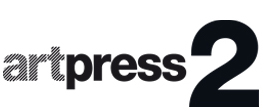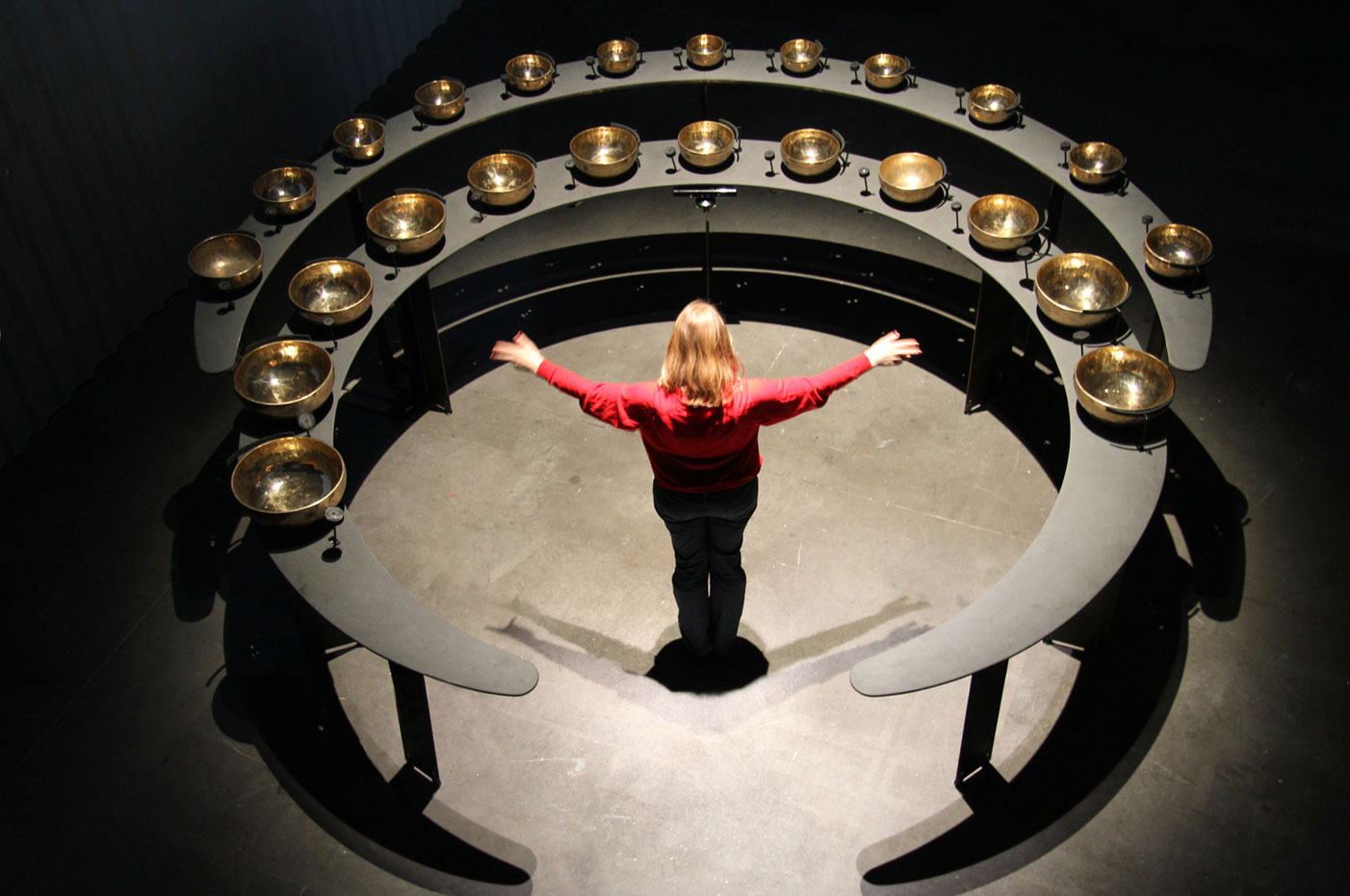
mai/juin/juillet 2017 | Ecrit par Dominique Moulon
L’EFFET FRESNOY
THE FRESNOY EFFECT

DU MEDIUM NUMERIQUE ENTRE AUTRES MEDIAS
La magie des interfaces
L’usage des technologies, en art, permet d’insuffler vie aux objets, de les automatiser en leur conférant, parfois, une certaine magie. Depuis les avants-gardes italiennes ou russes, les artistes qui pratiquent le sound art le savent bien. C’est donc dans la continuité des recherches initiés par Léon thérémin , à l’origine du premier instrument de musique sans contact, que Léonore Mercier s’inscrit lors de sa création, en 2011, du Damassama : un instrument qu’elle envisage tel un « amphithéâtre de bols tibétains ». Les spectateurs de l’exposition Panorama 13 s’en sont saisi avec une relative dextérité. Prenant la place du chef d’orchestre, ils s’adressaient aux bols par des gestes évoquant le phénomène de la télékinésie. Ils vivaient l’expérience jusque dans l’invisibilité de l’espace qui les séparait des objets ou instruments sans instrumentistes et dont ils obtenaient des sons ou des notes de musique. Léonore Mercier n’en a pas fini avec la sculpture, pratique résolument spatiale, de matériaux sonores, puisque c’est l’objet de son dernier instrument, le Synesthésium, un dôme d’une envergure de douze mètre, équipé d’une multitude d’enceintes et dédier à l’immersion sonore.
DIGITAL AMONG OTHER MEDIA
Interface magic
The use of technology in art makes it possible to bring objects alive and sometimes infuse them with a certain magic quality. This has been well-known to sound art practitioners since the time of the Italian and Russian avant-gardes, when Soviet citizen Leon Theremin invented the first hands-off musical instrument. Leonore Mercier has been following the same road since 2011, when she invented the Damassama, an instrument comprising Tibetan singing bowls arranged in an amphitheater. Visitors to the Panorama 13 (2011) exhibition were able to play it for themselves, and not badly at that. Playing the role of an orchestral conductor, they made the bowls ring by making hand gestures in their direction as if by telekinesis. This let them experience the invisibility of the race separating them from the instruments, which, despite the lack of instrumentalists, yielded sounds and music. Mercier’s sound installations, nevertheless, are still sculptural and therefore highly spatial. Her latest instrument, the Synesthesium, a dome some dozen meters wide equipped with a multitude of speakers, produces a total sound immersion.

mai/juin/juillet 2017 | Ecrit par Dominique Moulon
L’EFFET FRESNOY
THE FRESNOY EFFECT

DU MEDIUM NUMERIQUE ENTRE AUTRES MEDIAS
La magie des interfaces
L’usage des technologies, en art, permet d’insuffler vie aux objets, de les automatiser en leur conférant, parfois, une certaine magie. Depuis les avants-gardes italiennes ou russes, les artistes qui pratiquent le sound art le savent bien. C’est donc dans la continuité des recherches initiés par Léon thérémin , à l’origine du premier instrument de musique sans contact, que Léonore Mercier s’inscrit lors de sa création, en 2011, du Damassama : un instrument qu’elle envisage tel un « amphithéâtre de bols tibétains ». Les spectateurs de l’exposition Panorama 13 s’en sont saisi avec une relative dextérité. Prenant la place du chef d’orchestre, ils s’adressaient aux bols par des gestes évoquant le phénomène de la télékinésie. Ils vivaient l’expérience jusque dans l’invisibilité de l’espace qui les séparait des objets ou instruments sans instrumentistes et dont ils obtenaient des sons ou des notes de musique. Léonore Mercier n’en a pas fini avec la sculpture, pratique résolument spatiale, de matériaux sonores, puisque c’est l’objet de son dernier instrument, le Synesthésium, un dôme d’une envergure de douze mètre, équipé d’une multitude d’enceintes et dédier à l’immersion sonore.
DIGITAL AMONG OTHER MEDIA
Interface magic
The use of technology in art makes it possible to bring objects alive and sometimes infuse them with a certain magic quality. This has been well-known to sound art practitioners since the time of the Italian and Russian avant-gardes, when Soviet citizen Leon Theremin invented the first hands-off musical instrument. Leonore Mercier has been following the same road since 2011, when she invented the Damassama, an instrument comprising Tibetan singing bowls arranged in an amphitheater. Visitors to the Panorama 13 (2011) exhibition were able to play it for themselves, and not badly at that. Playing the role of an orchestral conductor, they made the bowls ring by making hand gestures in their direction as if by telekinesis. This let them experience the invisibility of the race separating them from the instruments, which, despite the lack of instrumentalists, yielded sounds and music. Mercier’s sound installations, nevertheless, are still sculptural and therefore highly spatial. Her latest instrument, the Synesthesium, a dome some dozen meters wide equipped with a multitude of speakers, produces a total sound immersion.
